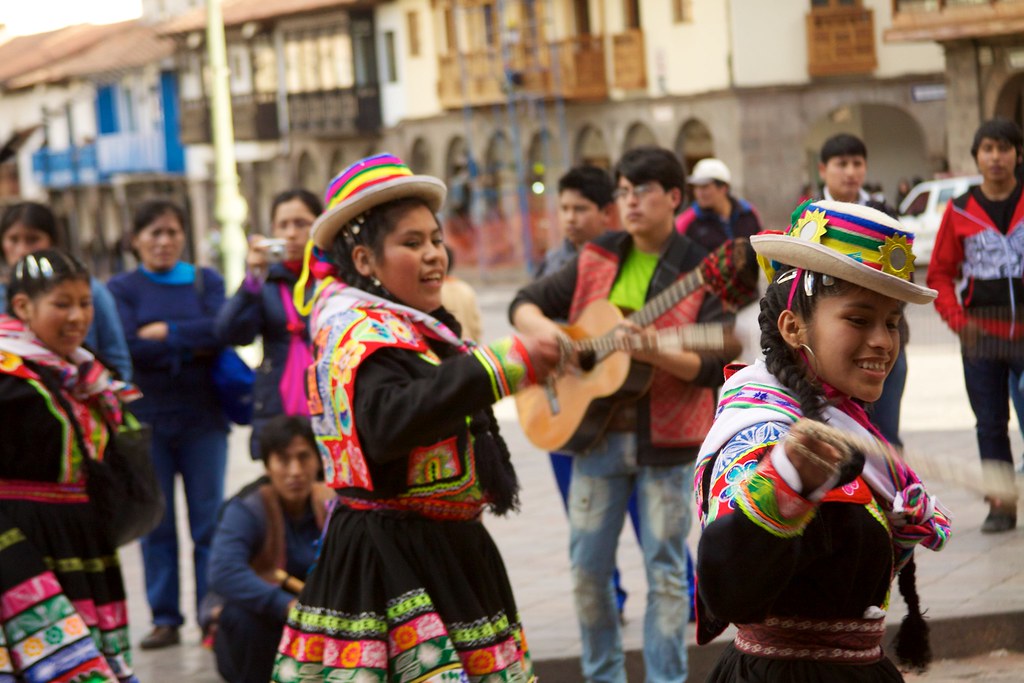CUZCO — High up in the Andes mountains is a magical city with a rich history that began long before Peru was Peru. Time hasn't exactly passed Cuzco by. Little by little, the former capital of the Incas — rulers of an empire that dominated the range for a century until it was destroyed by Spaniards in the 1530s — has modernized. And yet, to a remarkable degree, the legacy of Cuzco's imperial past lives on.
It's no accident. Out of pride and respect for the customs and traditions of their ancestors, residents in Cuzco have engaged in a daily struggle to keep the city's history alive. Evidence of that Herculean effort abound: Even in the most modern hotel, visitors are likely to encounter, in some lounge or lobby, an enormous block from an ancient structure, chiseled as always with millimetric precision.
Carving stones was a specialty of the Incas, who extracted them from revered mountains near Cuzco and shaped them into monumental building blocks. Preserving what is left of the structures is now a cornerstone of Peru's heritage-preservation efforts.
The country's gastronomy is another living legacy, one that enjoys a fair amount of international acclaim and serves as a magnet for tourists from across the world. In Cuzco, the odors of ancestral recipes pervade the streets.

Traditional dancing un Cuzco — Photo: McKay Savage
One very traditional product is pisco, an alcoholic drink derived from grapes. The origins of the drink, which is also of great importance in Chile, are disputed. Peru, for that reason, has sought international certification to establish an exclusive claim on the potent and flavorful spirit.
The Peruvians began making pisco when Spanish colonial authorities forbade them to make wine. It can be made from eight types of grape only, four of which are aromatic and four, odorless, though the particular bouquet and agreeable taste of pisco is the result of its particular process of fermentation and distillation.
Unlike wine, pisco is not left to age. Nor do pisco makers add sugar or dilute it. These were conscious decisions made to distinguish the process from the Spanish wine-making tradition imposed on Peru.
Weathering the elements
One need not venture very far from the city to find more prime examples of Inca construction and development. The massive dimensions of the remains are still, in many ways, a mystery given the limited technology available then to transport the bulky components.

Cuzco's Plaza de Armas — Photo: Christophe Meneboeuf
Even more mysterious, perhaps, are the rigorous construction techniques that allowed these monuments to survive for hundreds of years and withstand earthquakes like the one that shook Cuzco on May 21, 1950. More than half the city was destroyed before the impassive gaze of historic edifices that had already witnessed the depredations of the Spanish soldiery.
That, interestingly enough, was the year that authorities began thinking of the area's tourist potential. Faithful to their traditions and culture, Cuzco's residents restored the city using the same massive stone foundations that had withstood the earth's movement. The quake shook with such violence that a black Christ statue made by a city artisan, then buried 10 meters underground for displeasing the Church, rose to the surface in the city square. Locals claimed the shaking stopped and there was a tense calm when the statue emerged. It can now be seen in Cuzco's cathedral.

The "Lord of the Earthquakes" statue in Cuzco's cathedral — Photo: LopeHope
The cathedral, located in the main square, is one of the city's main attractions for its paintings, sculptures and images. The hybrid style of the artwork indicates a determination among local artists to retain their aesthetic traditions. Joseph, Jesus and Mary are shown wearing indigenous garb. One of the dishes shown on a picture of the Last Supper is guinea pig — a local delicacy — accompanied by vessels that would typically contain chicha morada, a traditional drink made from corn.
Into the Sacred Valley
The Incas believed death was not the end of life, but a point of passage. For that reason they had strict funerary rites that historians have deciphered only with difficulty, due to the Spaniards' eagerness to destroy all traces of Inca veneration for the deceased.
Tombs located in the mountains flanking the Sacred Valley of the Incas (a 30-minute drive from Cuzco near the famous Machu Picchu) were closed, then ransacked for the gold and jewels adorning their mummies. They were practically destroyed. Today, visitors must look to discern the mountainside orifices that are the remains of those mystical resting places.

Llama admiring the view over Machu Picchu — Photo: Dennis Jarvis
The valley was one of the empire's main sites of agricultural production, thanks to its climate and soil quality. Stone structures located some 3,500 meters above sea level were used as store rooms. Nearby are the modern-day remains of spacious buildings that housed the day laborers who created the stairway structures above rocks, designed to maximize crop yields.
To further fortify its cultural revival, five years ago the city began teaching Quechua, one of the region's main native languages, in schools and colleges. To graduate in university courses like medicine, law, social sciences and of course anything related to tourism, one must obtain a certificate of fluency in Quechua.
*Written at the invitation of Avianca airlines and Peru's tourism agency PromPerú.





